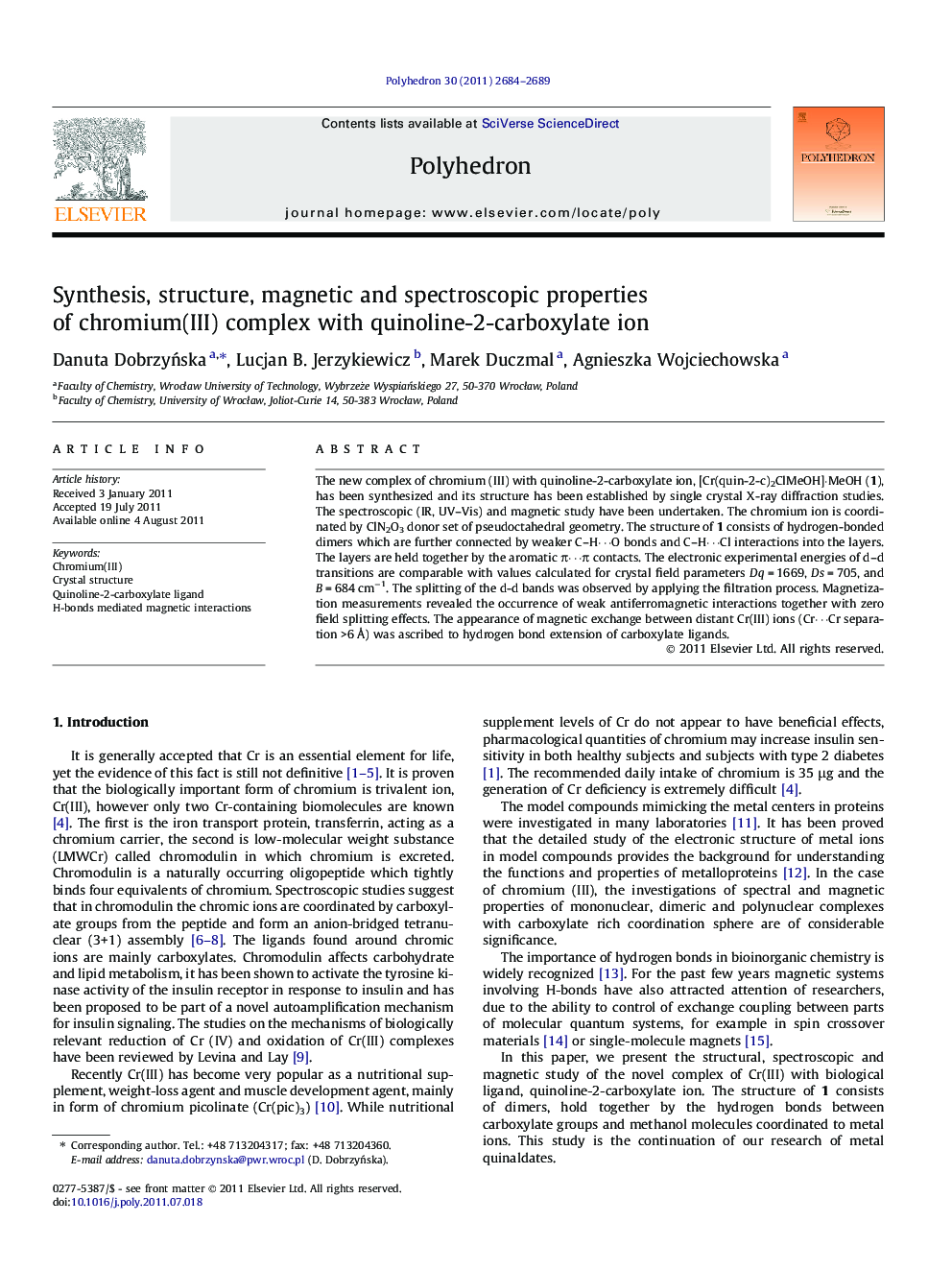| Article ID | Journal | Published Year | Pages | File Type |
|---|---|---|---|---|
| 1334800 | Polyhedron | 2011 | 6 Pages |
The new complex of chromium (III) with quinoline-2-carboxylate ion, [Cr(quin-2-c)2ClMeOH]·MeOH (1), has been synthesized and its structure has been established by single crystal X-ray diffraction studies. The spectroscopic (IR, UV–Vis) and magnetic study have been undertaken. The chromium ion is coordinated by ClN2O3 donor set of pseudoctahedral geometry. The structure of 1 consists of hydrogen-bonded dimers which are further connected by weaker C–H⋯O bonds and C–H⋯Cl interactions into the layers. The layers are held together by the aromatic π⋯π contacts. The electronic experimental energies of d–d transitions are comparable with values calculated for crystal field parameters Dq = 1669, Ds = 705, and B = 684 cm−1. The splitting of the d-d bands was observed by applying the filtration process. Magnetization measurements revealed the occurrence of weak antiferromagnetic interactions together with zero field splitting effects. The appearance of magnetic exchange between distant Cr(III) ions (Cr⋯Cr separation >6 Å) was ascribed to hydrogen bond extension of carboxylate ligands.
Graphical abstractThe new complex of chromium(III) with quinoline-2-carboxylate ion, [Cr(quin-2-c)2ClMeOH]·MeOH (1), has been synthesized and studied by X-ray diffraction, spectroscopic (IR, UV–Vis) and magnetic methods. Magnetic interactions between Cr(III) are transmitted by hydrogen bonds.Figure optionsDownload full-size imageDownload as PowerPoint slideHighlights► Cr(III) complex with quinoline-2-carboxylate ligand. ► 2D structure made of hydrogen-bonded dimers. ► Magnetic coupling through hydrogen bridges. ► Electronic spectra, crystal field parameters.
